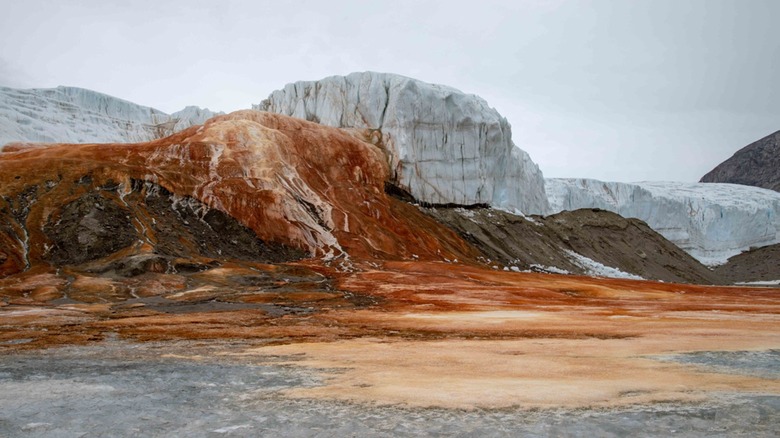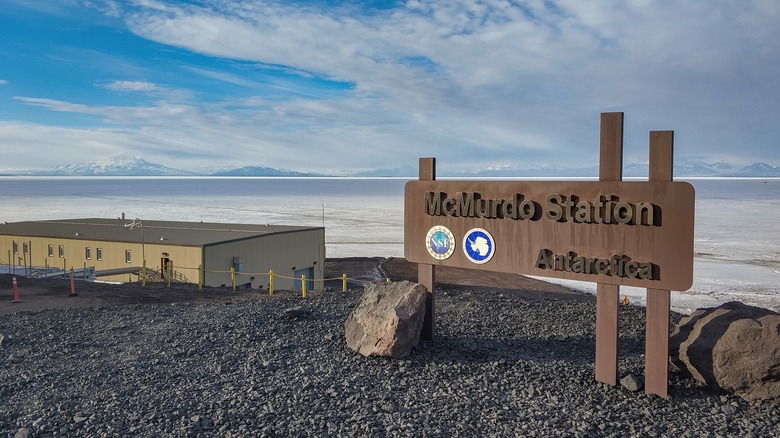The Mystery Of Antarctica's Unsettling Blood Falls Explained
Antarctica is an adventurer's dream destination with so many mysteries, jaw-dropping sites, and experiences that can not be found anywhere else on the globe. As a result of this continent's extreme isolation and harsh conditions, there are untouched ecosystems that allow species to thrive. It's a geological wonder with many secrets still waiting to be discovered. One of Antarctica's greatest mysteries remained so for decades. Blood Falls, as the name suggests, is a haunting bloody red cascade that flows against a snowy white backdrop of the Taylor Glacier. It literally gives the appearance of blood falling out of the ice. The contrast and combination of ice and water along with white and red hues, adds to the mysterious appeal of the location.
This mystery, while very unusual, is a result of iron oxidation. The ancient, iron-rich seawater trapped under the glacier turns color once exposed to oxygen. The striking scene at Blood Falls caused by this peculiar natural phenomenon has left explorers and scientists in awe since being discovered 100 years ago.
The history and science behind this fascinating phenomenon
Discovered by English-Australian geologist Thomas Griffith Taylor in 1911, Blood Falls left scientists of the time quite puzzled. Many thought the red color was due to a type of algae in the water, as is the case with some of the most spectacular pink lakes in the world. But researchers ultimately determined that the water beneath the glacier has an unusually high concentration of iron. It becomes a rusty red color as it passes through the ice, comes into contact with the air, and cascades down the five-story drop.
Scientists have uncovered other fascinating anomalies about this site. For one, beyond its high iron content, the water flowing from the glacier is around three times saltier than most sea water. They also found unique organisms that have managed to survive for millions of years trapped a quarter of a mile beneath the ice without light or oxygen. This is particularly fascinating in an area that is completely devoid of animals or complex plants! Research suggests that these microbes managed to survive by converting iron into food and energy. This discovery raised questions to the possibility of living organisms in similarly harsh conditions on other planets, making Blood Falls an even more otherworldly and mysterious place than it already appears.
If you want to see this rare phenomenon for yourself, you may have to change career paths or wait a while. Blood Falls can only be reached by helicopter from McMurdo Station, a U.S. research facility based in Antarctica that is not currently open for tourism. But if you want to go to Antarctica, there are lots of other amazing things to see and do.

